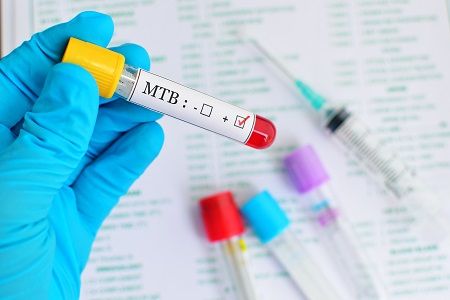Article
Tuberculosis Associated with Worsened Patient Mortality Post-Treatment
Author(s):
Standardized mortality ratio increased by nearly a full percentage among patients previously treated with TB.

Patients who have been treated for tuberculosis (TB) have a significantly increased chance of mortality from all causes compared to the overall population, according to a new study.
Long- term mortality estimates following tuberculosis treatment is rare. A team of investigators led by Kamila Romanowski, MSc—of Provincial TB Services at the British Columbia Centre for Disease Control—found that cardiovascular disease was the most common cause of death following treatment.
The combined standardized mortality ratio (SMR) for people with tuberculosis when compared with the general population was 2.915%. Restricted to just people with a cure or confirmed treatment completion, that number jumped to 3.76%.
Estimates remained consistent when stratified for type, age, sex, and country income.
Investigators reviewed studies published between January 1997 and May 2018. Overall, 7283 studies were identified, 10 of which were used. Studies used provided bacterial or clinical confirmation of tuberculosis, provided sufficient data on mortality estimates—or enough to calculate it.
All the studies also used a cohort design. Studies that had a study population of 50 patients or fewer or studies who duplicated data were excluded. Combined, 40,781 people and 6922 deaths were analyzed.
Cause of mortality for 4226 deaths post treatment were extracted. Investigators either extracted or calculated the SMR. When an SMR wasn’t available, mortality hazard ratios or mortality rate ratios were used.
“People treated for tuberculosis have significantly increased mortality following treatment compared with the general population or matched controls,” the study states.
In recent years, promising steps have been made to treat tuberculosis. In April, a study conducted across 4 countries found a drug that was able to clear up the multidrug resistant tuberculosis in only half the time recommended by the World Health Organization: 20 months.
The previous phase 3 trial had an efficacy rate of 78.8%, which is only 1% lower than the efficacy of the long- term treatment rate. The short regimen consisted of high-dose moxifloxacin, clofazimine, ethambutol and pyrazinamide administered over a 40-week period, supplemented in the first 16 weeks by kanamycin, isoniazid, and prothionamide.
"The results have been used by WHO in their most recent recommendations for treating MDR-TB," researcher Andrew Nunn, MSc, of the Medical Research Council Clinical Trials Unit at University College London told MD Magazine® in an interview at the time of the study’s publication. "A second stage of the study is investigating whether the injectable drug can be replaced with bedaquiline, to provide an all-oral regimen."
Investigators from the most recent trial concluded TB’s association with worsened mortality among patients when compared to the general population. Such findings indicate the need for additional research into the biomedical and social factors at play, they wrote.
The study, “Long-term all-cause mortality in people treated for tuberculosis: a systematic review and meta-analysis," was published online in The Lancet.





